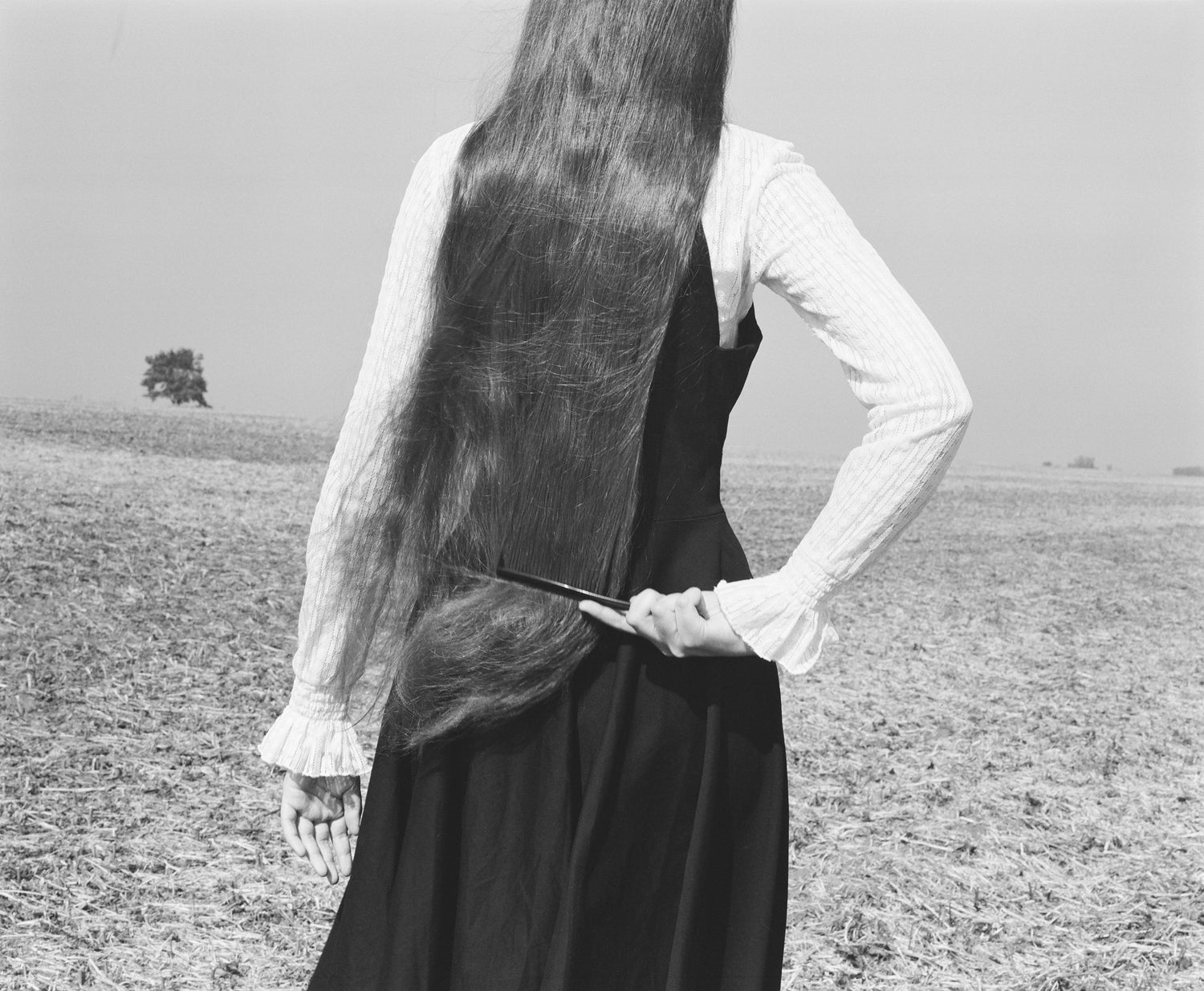Lupu weaves documentary and partially-directed personal photography in an archive of wartime experiences in her home country of Ukraine. Despite the difficult realities she and her contemporaries experience, she finds dreamy and intimate moments which shine through. As artist-in-residence with
Arts&Rec in Stamford, New York, Lupu has been spending the past month examining and getting to know the region.
In her recent series Spovid’ (Confession), Lupu sought to capture the invisible and collective trauma through tender portraits of landscapes and people, rendered in both black-and-white and images created using the red scale technique, an analog process in which film is exposed from the wrong side exposing the red-sensitive layer first rather than last. “This is an inside-out project, a confession,” Lupu says. “I leave the associations with red color to the viewer, offering only one of my own: the scorching summer sun over the Ukrainian steppe, bearing in mind that the series was created in the summers of 2023 and 2024.” In On Dreams and Screens, Lupu documented seven Ukrainian webcam girls, photographing them in moments of self-contemplation – in the places of their childhood, favorite nature spots, or at home. In the current photographs taken around Stamford and Delaware County, New York, Lupu trains her lens in extreme close-ups on the idiosyncratic poetry of the fractured local landscape.
In 1996, the renowned American photographer Philip-Lorca diCorcia shot hundreds of frames in the Ukrainian city of Odesa. Except for a single picture, the photographs were never published. When seeing the city reappear in coverage of the present war, diCorcia revisited his archives and selected a series of these previously unseen photographs of the life and people of the historic port of Odesa and its surroundings. Through intimate portraits of daily life and across bucolic landscapes both rural and
urban, diCorcia presents an image of a city during peacetime, resplendent in the freedoms that are being devastated by Putin’s invasions. In 2022, Sprüth Magers London offered a run of unlimited edition prints of these photographs for sale with the following provision set by the artist:
“Motivated by a desire to help the people of Ukraine, and in response to the on-going conflict and the resultant humanitarian crisis, 100% of the proceeds of this presentation are being donated to the Red Cross, funding essential food, medicine, and clothing as well as first aid training and shelter for those affected across the country. […] As a strategic and cultural hub on the Black Sea, Odesa, Ukraine’s
third-largest city, occupies a unique position both geographically and within the psyche of the nation. It is known as a place of joviality and leisure, popular historically as a tourist destination for Ukrainians and Russians alike. Given its location, it has also functioned as a major logistical and economic centre
serving the rest of Ukraine, and therefore an obvious target for the Russians too.”
We feel privileged about showing these images alongside Lupu’s personal, yet documentary photographs of Ukraine made more recently in the midst of war, but the juxtaposition also leaves us a with sense of unease. On their own, diCorcia’s images could be seen as nostalgic, depicting a society in many ways out of time during a period of rapid transformation after the fall of the Soviet Union.
Today, they remind us of the fragility of freedom and serve as a historic document of Lupu’s childhood, against which her images -- of camgirls, volunteer soldiers, ravaged landscapes, and communities of friends -- acquire moral urgency and tenderness.
- Choosing a selection results in a full page refresh.
- Opens in a new window.




